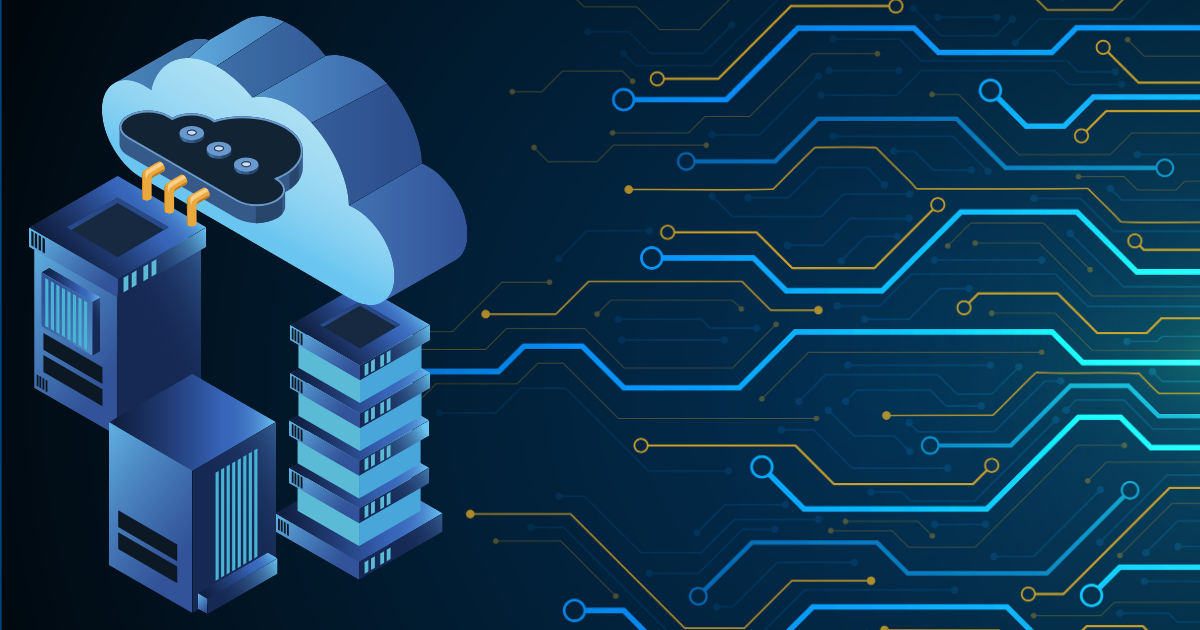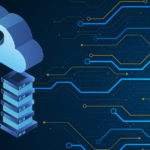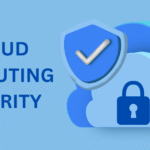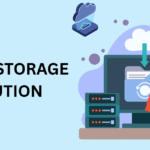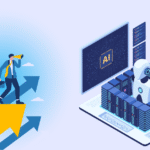We can begin with a secret- already, you are in the cloud. Every time you back up photos on Google Drive, stream your favorite show on Netflix, or check your email on your phone, you’re using cloud technology. It is the engine of our digital existence that powers all things, including social media and multi-billion-dollar businesses, without our notice.
To tech people, cloud computing is the revolution in the way we design, implement, and scale online systems. To ordinary users, it is what allows us to work, learn, and collaborate anywhere.
So, what exactly is cloud technology? How does it work? And what is it that has made it the stalwart of the contemporary digital world?
Let’s unpack that.
What is Cloud Technology?
At its core, cloud technology (or cloud computing) means using remote servers hosted on the internet to store, manage, and process data, rather than relying on your own physical computer or local server.
Imagine leasing computing power, rather than buying it.
You get what you want, when you want it, and only pay when you consume the service.
The idea was an expansion of the internet in the early days, when the data was stored in one computer/local network. With the advent of improved broadband Internet speeds and the explosion of virtualization, companies also discovered they could have the computing resources remotely hosted and provide them as a service to anyone in the world.
The National Institute of Standards and Technology (NIST) characterizes cloud computing by five attributes:
On-demand self-service – Resources can be obtained instantly without having to wait for IT teams.
Wide access to network – Services can be accessed through the internet on any device.
Resource pooling – It involves the sharing of computing resources by the provider with several users.
Quick elasticity – Systems can expand and contract.
Measured service – Just pay as you use.
Concisely, the cloud offers flexibility, scalability, and convenience; all via the internet.
What are the three most popular cloud services?
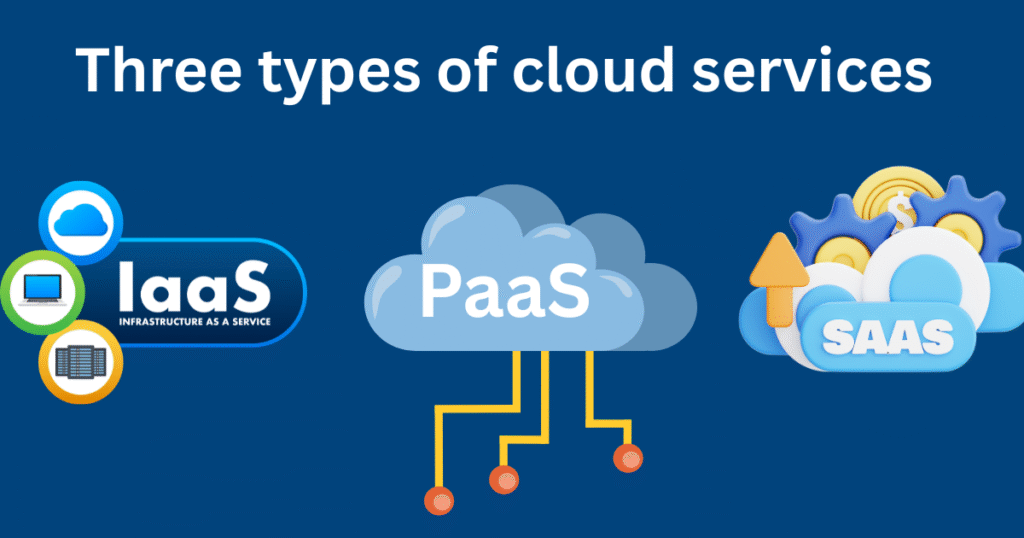
Cloud computing is not universal. It is separated into three overriding models depending on the type of service you receive.
1. Infrastructure as a Service (IaaS)
IaaS provides the basic building blocks of cloud technology — servers, storage, and networking — all hosted by a provider like Amazon Web Services (AWS), Google Cloud, or Microsoft Azure.
You have complete control of your operating systems and applications, but you do not need to maintain physical hardware.
Example: maintaining a company site or a data analytics system.
2. Platform as a Service (PaaS)
PaaS provides developers with a platform to develop, test, and deploy applications without concern about server or infrastructure.
Examples: Google App Engine or Heroku.
It is popular with developers, as it accelerates innovation – you write code, not hardware.
3. Software as a Service (SaaS)
This is the best-known model to consumers. SaaS provides software as a service, which is readily used software provided via a browser or application through the internet.
E.g., Gmail, Zoom, Canva, Salesforce, Microsoft 365.
No set-ups, no upgrades, simply log in and work.
What are the 4 Types of cloud deployment models?
There are various ways of deploying clouds:
Public Cloud
Third-party operated (such as AWS, Google Cloud, Azure).
Inexpensive, scalable, and recommended in case you do not want to maintain your own servers.
Private Cloud
A single organization environment.
More control and security at a higher cost.
Hybrid Cloud
Integrates both the public and the private cloud to create a balance between flexibility and security.
Usually found in businesses such as banking or healthcare, where sensitive data must be over-secured.
Multi-Cloud
Spreading risk through more than one cloud provider.
A multi-cloud approach is common in many businesses today to provide resilience and flexibility.
How does cloud computing work in simple terms?
Let’s peek under the hood.
Cloud technology relies on massive data centers filled with servers around the world. Such data centers contain virtualized instances of computing resources, such as CPUs, memory, and storage, accessible to users via the internet.
When you use a cloud service:
1. A secure internet connection links you to a data center belonging to a provider.
2. Virtues of virtualization software disaggregate and allocate resources on a dynamic basis.
3. The provider tracks performance, maintains uptime, and scales automatically.
4. You pay by the use, just like you pay to use electricity or water.
Everything is connected with the help of API (Application Programming Interfaces), which enables the interaction between the applications and the cloud services.
To technologists, it is magic to be able to provision and deploy infrastructure using only a few lines of code.
What are the Benefits of Cloud Technology
How come cloud computing is so popular? The following are the largest benefits:
Scalability
Spread the traffic load of the increased workload without necessarily purchasing additional hardware. Ideal to expand businesses.
Cost Efficiency
There is no necessity to spend money on costly servers and maintenance. Pay-as-you-go implies that you only pay when you use it.
Accessibility
You can work anytime and anywhere, and on any device as long as you have an Internet connection. A remote worker game-changer.
Speed & Agility
Bring new applications or services online within minutes, not weeks. The shorter the time-to-market, the more innovation.
Reliability
Disaster recovery, built in, and automatic backups. In the event of the failure of one server, it is immediately replaced by another server.
Collaboration
Communication is possible, files can be shared, and projects can be worked on, all in real time, anywhere in the world.
What are the challenges of cloud computing?
Naturally, not everything is sunshine and sky. Storm clouds to watch on the cloud have their clouds too:
Security and Privacy
Saving information on the Internet is placing your faith in a third party. Although cloud vendors spend a lot of money on security, breaches and misconfigurations do occur.
Vendor Lock-In
When your systems rely on proprietary tools or platforms, switching providers can be hard.
Downtime & Latency
Even the most perfect providers have lapses. The performance of users who are at a long distance from data centers can be affected by latency issues.
Hidden Costs
You can blow out of control without a checkup, particularly when scaling up or moving data around.
Data Sovereignty & Compliance
Rules regarding where data may be stored vary between different countries (GDPR, HIPAA, etc.). Organizations are required to be compliant.
Environmental Impact
The amount of energy used in data centers is enormous. The emergence of green cloud efforts is destined to minimize such an imprint.
Real-World Examples of Cloud Technology
To envision the extent to which cloud technologies are widespread, one might look at the following examples that we use every day:
Google Drive, Dropbox, iCloud: Personal and business cloud storage.
Netflix and Spotify: On-demand delivery of streaming information through cloud repositories.
Zoom and Microsoft Teams: Video conferencing in the cloud.
AWS and Azure: Websites, AI, and business systems around the world.
Salesforce: CRM is cloud cloud-based program applied by companies all over the world.
In short, cloud technology powers everything from your favorite apps to global-scale data analytics and AI.
What is the future of cloud computing 2025?
The cloud is evolving fast. Here’s where it’s headed next:
AI and Cloud Integration
Machine learning tools and generative AI heavily depend on cloud computing to process data and train the model.
Edge and Fog Computing
The processing of data near the user minimizes latency. This is essential to IoT, self-driving vehicles, and analytics.
Serverless Computing
It is possible to run code with no server management at all, the final abstraction layer, and developers run it.
Multi-Cloud and Inter-Cloud Ecosystems.
Companies will continue to spread work loads across several clouds so that there is flexibility and redundancy.
Green Cloud Initiatives
Sustainability will be a selling feature, with providers investing in renewable energy and energy-efficient data centers.
Zero-Trust Security
The new default cloud security model will be known as never trust, always verify.
The bottom line? The cloud is not a fad, but the basis of the next generation of digital innovation.
Which of the following factors should be considered before cloud migration?
As a consumer, as an IT professional, there are some major questions to ask before leaping in:
For Businesses / Developers
How much money and how big do we need to be?
Is compliance part of our requirements ( GDPR, HIPAA?
Is it that we are escaping vendor lock-in?
What about monitoring and backup?
For Everyday Users
Who owns my data?
How secure is my account?
Am I able to readily save up or download my data?
What will occur in the event of service failure?
It will save you a lot of headaches in the future with a little planning.
Conclusion
Cloud technology has redefined how the world works — and it’s only getting smarter.
Cloud computing has become a ubiquitous part of our digital lives, whether it’s a startup creating the next big app or a family storing the memories of our digital lives in the cloud. It is quick, adaptable, and available; however, it also requires awareness concerning privacy, cost, and control.
To tech experts, it is no longer an option to master the cloud but a necessity. As a regular user, knowing the mechanics can help you make wiser and safer decisions online.
Simply put, the limit is not the sky; it is the cloud.
